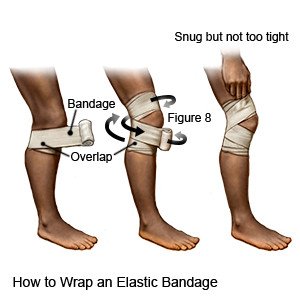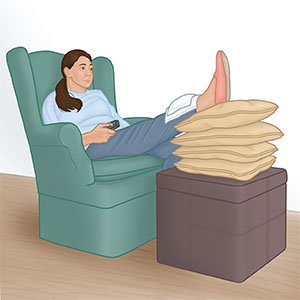Hamstring Injury
Medically reviewed by Drugs.com. Last updated on Aug 4, 2025.
A hamstring injury is a bruise, strain, or tear to one of your hamstring muscles. Your hamstring muscles are in the back of your thigh and help bend and straighten your leg.
DISCHARGE INSTRUCTIONS:
Return to the emergency department if:
- Your lower leg or foot is pale or blue, and feels cool when you touch it.
- You have severe pain.
- You cannot bend or straighten your leg.
Call your doctor if:
- You have a fever.
- Your signs and symptoms do not improve with treatment.
- You have questions or concerns about your condition or care.
Medicines:
- Medicines can help decrease pain and swelling.
- Take your medicine as directed. Contact your healthcare provider if you think your medicine is not helping or if you have side effects. Tell your provider if you are allergic to any medicine. Keep a list of the medicines, vitamins, and herbs you take. Include the amounts, and when and why you take them. Bring the list or the pill bottles to follow-up visits. Carry your medicine list with you in case of an emergency.
Self-care:
- Rest your hamstring muscles as directed.
- You may need to use crutches until you can put weight on your injured leg without pain. This will help decrease stress and strain on your hamstring muscles.
- Apply ice on the back of your thigh for 15 to 20 minutes every hour or as directed. Use an ice pack, or put crushed ice in a plastic bag. Cover it with a towel before you apply it. Ice helps prevent tissue damage and decreases swelling and pain.
- Wear an elastic bandage to help decrease swelling. It should be snug but not tight.

- Elevate your leg above the level of your heart as often as you can. This will help decrease swelling and pain. Prop your leg on pillows or blankets to keep it elevated comfortably.

- Go to physical therapy, if directed. A physical therapist teaches you exercises to help improve movement and strength, and to decrease pain.
Prevent another hamstring injury:
- Ask when you can return to your usual activities. You may injure your hamstring muscles more if you start activity too soon.
- Warm up and stretch before and after you exercise. This helps loosen your muscles and decrease stress on your hamstring muscles. Slowly increase time, distance, and how often you train. A sudden increase may cause injury.
Follow up with your doctor as directed:
Write down your questions so you remember to ask them during your visits.
© Copyright Merative 2025 Information is for End User's use only and may not be sold, redistributed or otherwise used for commercial purposes.
The above information is an educational aid only. It is not intended as medical advice for individual conditions or treatments. Talk to your doctor, nurse or pharmacist before following any medical regimen to see if it is safe and effective for you.
Further information
Always consult your healthcare provider to ensure the information displayed on this page applies to your personal circumstances.
